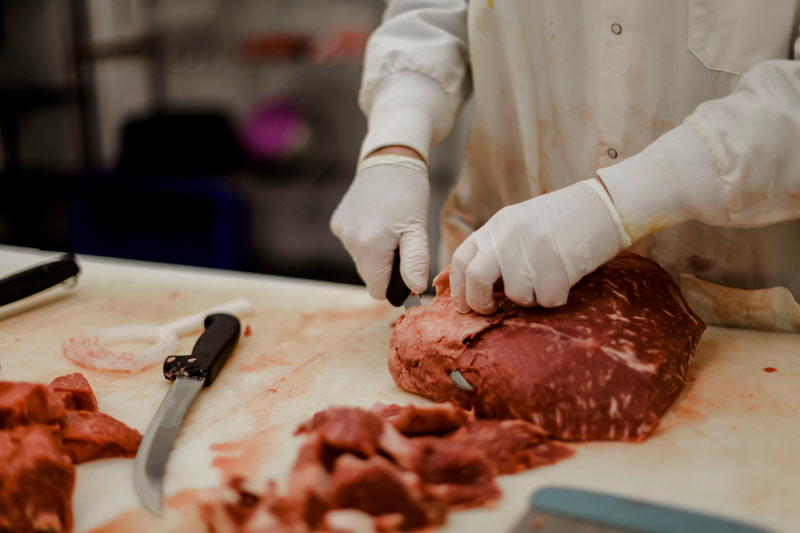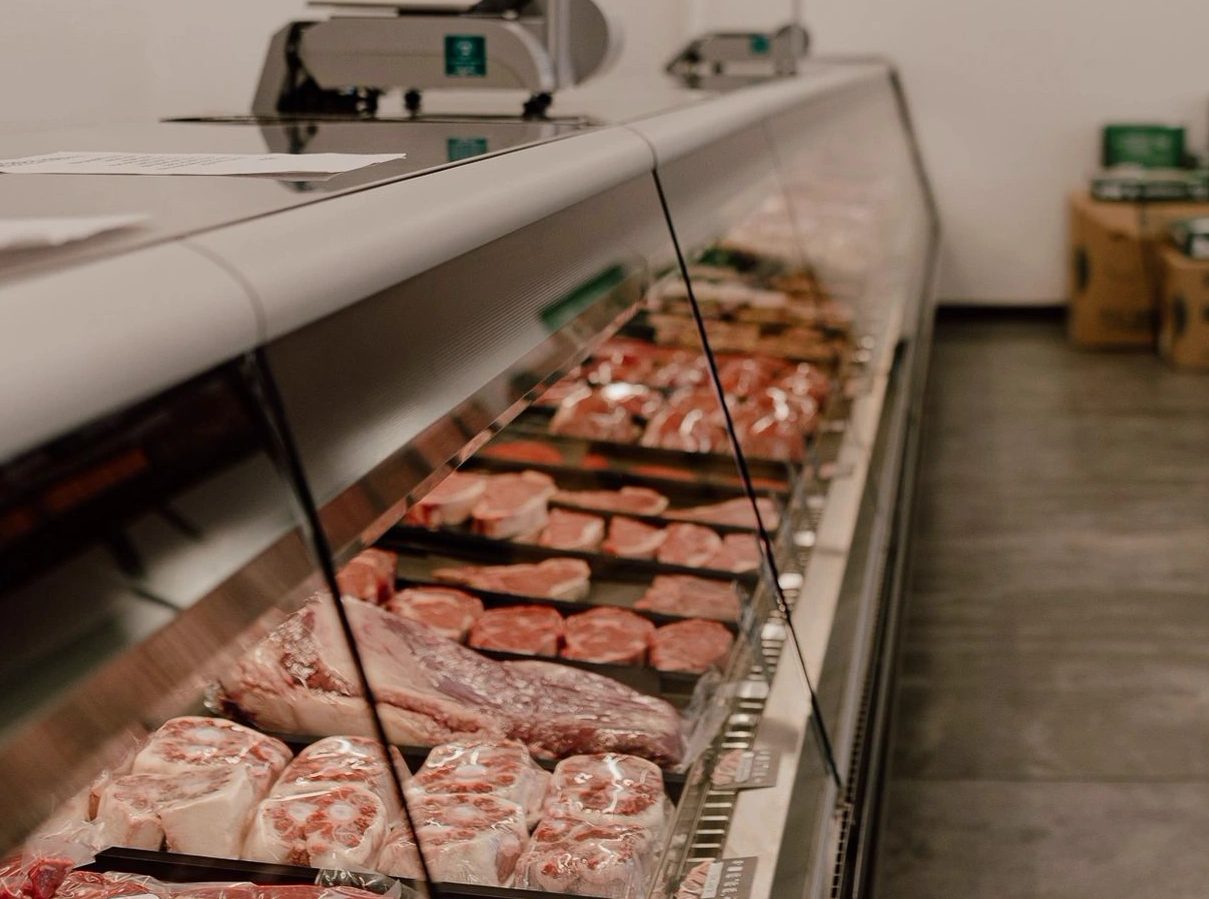Bagley Farms Meat Market Edwardsville IL: Your Best Location for Regional Meat Selection
Bagley Farms Meat Market Edwardsville IL: Your Best Location for Regional Meat Selection
Blog Article
Reveal the Art of the Butcher's Cut in a Modern Meat Market
In the ever-evolving landscape of modern meat markets, the butcher's cut has actually transcended its traditional roots, merging old-time workmanship with modern practices. What truly establishes the modern-day butcher apart is their ability to build a much deeper link between consumers and the origins of their meat.
Advancement of Butchery Strategies
The evolution of butchery strategies mirrors an abundant tapestry of innovation and adjustment driven by improvements in technology, adjustments in consumer demand, and a much deeper understanding of meat science. Historically, butchery was a craft gave through generations, with techniques developed over centuries to optimize return and taste. The industrial change ushered in mechanization, transforming conventional methods and making it possible for massive processing.
The mid-20th century saw butchery methods even more improved by clinical insights right into muscle mass biology and meat aging, improving both tenderness and preference. Technologies like vacuum packaging and refrigeration prolonged product shelf-life, permitting butchers to branch out offerings and boost quality assurance. This duration also noted the rise of customized devices, such as band saws and meat slicers, which increased accuracy and effectiveness in meat handling.

Digital systems now help in monitoring animal provenance and maximizing cuts to meet specific client choices. Additionally, a renewal in artisanal butchery has actually arised, blending standard skills with contemporary expertise to provide to customers seeking moral and sustainable meat alternatives.
Understanding Meat Cuts
Recognizing the ins and outs of meat cuts is vital for both butchers and customers looking for high quality and value. Each cut originates from a different component of the pet, presenting unique flavors, structures, and food preparation approaches - bagley farms meat market edwardsville il. Proficiency of these differences not just boosts culinary experiences however additionally maximizes the utility of each carcass. For butchers, exact cuts show ability and regard for the craft, ensuring minimal waste and ideal return.

Understanding muscular tissue make-up is vital; muscular tissues used a lot more frequently by the pet often tend to be tougher and are best matched for slow-moving cooking techniques, while less-used muscle mass, like those found in the loin, are extra tender and suitable for barbecuing or roasting. Knowledge with these differences encourages customers to make informed choices, enhancing their culinary endeavors.
Picking High Quality Meat
Picking the ideal meat involves more than simply selecting an aesthetically attractive piece from the display. bagley farms meat market edwardsville il. The art of selecting quality meat calls for a discerning eye and understanding of particular qualities that represent quality and excellence. To start with, focus on the shade; beef must have an intense, cherry-red shade, while lamb needs to display a soft pink tone, and pork a pale pink. This suggests the meat is fresh and hasn't been exposed to oxygen for too long.
Second of all, take into get more consideration the marbling, which describes the white flecks of fat within the muscular tissue. Proper marbling is a vital sign of tenderness and taste, as it thaws throughout cooking, improving the meat's juiciness. right here Bear in mind, higher marbling frequently correlates with exceptional top quality cuts, such as USDA Prime.
Structure is another critical variable; meat needs to really feel strong to the touch, not slimed or excessively soft. In addition, bear in mind the aroma. Fresh meat needs to have a tidy, neutral smell, without any sour or repulsive odors.
Coupling Cuts With Cooking Approaches

On the other hand, tougher cuts like brisket and chuck roast are rich in collagen, which damages down into gelatin when prepared gradually. These cuts are suitable for braising or slow roasting, enabling the meat to soften gradually and develop deep, intricate flavors. Cuts such as short ribs and pork shoulder make out well with slow-cooking methods, where prolonged cooking times change their robust structures into succulent dishes.
Lamb shanks and oxtail, which require long term food preparation to tenderize, are best prospects for stewing or sluggish simmering. These methods coax out rich, hearty flavors while keeping dampness. By understanding the one-of-a-kind attributes of each cut, cooks and home cooks alike can boost their cooking developments, making certain each dish is both satisfying and remarkable.
The Butcher's Duty Today
Browsing the progressing landscape of the contemporary meat market, the butcher's duty today extends past mere prep work of cuts. Contemporary butchers are culinary craftsmens, educators, and advocates for sustainable practices. They connect the gap in between check over here the farm and the fork by making sure moral sourcing, understanding pet husbandry, and prioritizing transparency in the supply chain. This change reflects the expanding consumer need for top quality over quantity, where provenance and pet welfare are extremely important.
In addition to crafting accurate cuts, butchers currently engage directly with customers, supplying cooking advice and customizing options to suit private requirements and choices. Their experience in meat aging, marbling, and flavor accounts equips consumers to make enlightened decisions, improving their cooking experiences. This customized solution exemplifies the butcher's progressing duty as a relied on advisor in the kitchen.
Moreover, butchers are pivotal in decreasing waste, making use of entire animals to produce varied products such as sausages and supplies. This extensive strategy not just respects the pet but also lines up with contemporary sustainability objectives. By doing this, the modern-day butcher personifies both custom and development, adapting to an ever-changing market while protecting the artistry and integrity of their craft.
Verdict
Mastery in comprehending diverse meat cuts and high quality indicators empowers butchers to give enlightened recommendations, straightening particular cuts with optimum food preparation approaches. By honoring historical methods while embracing modern needs, the butcher's role stays crucial in today's advanced meat market.
Report this page